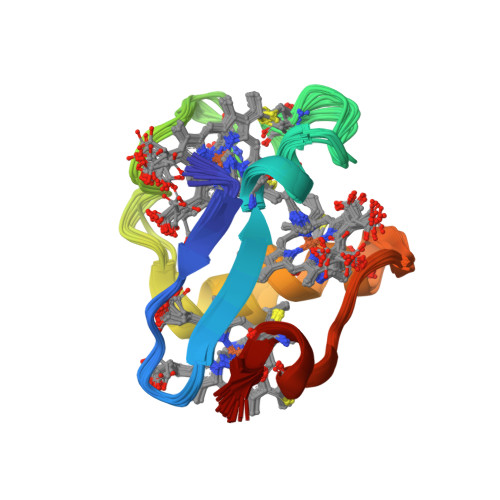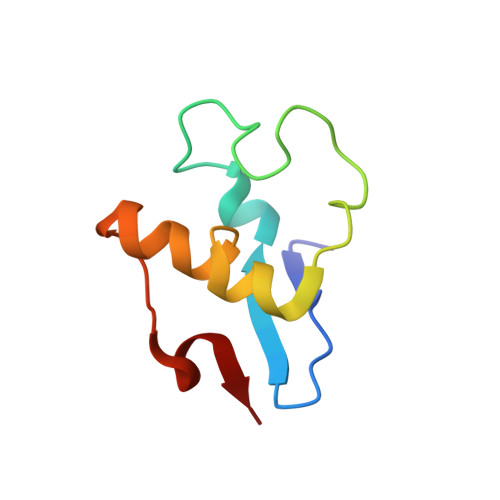Redox- and pH-linked conformational changes in triheme cytochrome PpcA from Geobacter sulfurreducens.
Morgado, L., Bruix, M., Pokkuluri, P.R., Salgueiro, C.A., Turner, D.L.(2017) Biochem J 474: 231-246
- PubMed: 28062839
- DOI: https://doi.org/10.1042/BCJ20160932
- Primary Citation of Related Structures:
2MZ9 - PubMed Abstract:
The periplasmic triheme cytochrome PpcA from Geobacter sulfurreducens is highly abundant; it is the likely reservoir of electrons to the outer surface to assist the reduction of extracellular terminal acceptors; these include insoluble metal oxides in natural habitats and electrode surfaces from which electricity can be harvested. A detailed thermodynamic characterization of PpcA showed that it has an important redox-Bohr effect that might implicate the protein in e - /H + coupling mechanisms to sustain cellular growth. This functional mechanism requires control of both the redox state and the protonation state. In the present study, isotope-labeled PpcA was produced and the three-dimensional structure of PpcA in the oxidized form was determined by NMR. This is the first solution structure of a G. sulfurreducens cytochrome in the oxidized state. The comparison of oxidized and reduced structures revealed that the heme I axial ligand geometry changed and there were other significant changes in the segments near heme I. The pH-linked conformational rearrangements observed in the vicinity of the redox-Bohr center, both in the oxidized and reduced structures, constitute the structural basis for the differences observed in the pK a values of the redox-Bohr center, providing insights into the e - /H + coupling molecular mechanisms driven by PpcA in G. sulfurreducens.
Organizational Affiliation:
UCIBIO, REQUIMTE, Departamento de Química, Faculdade de Ciências e Tecnologia, Universidade NOVA de Lisboa, 2829-516 Caparica, Portugal.

















